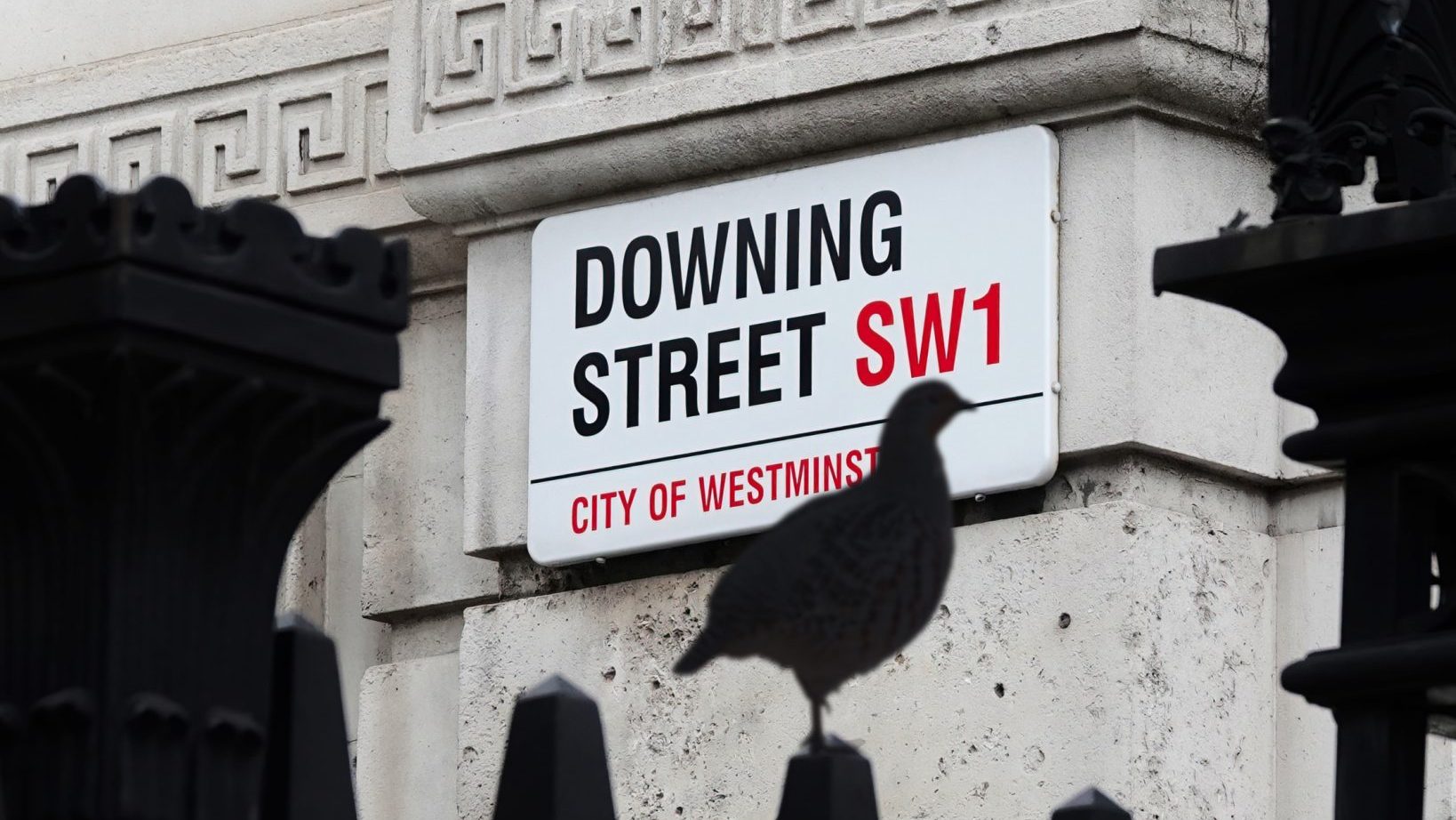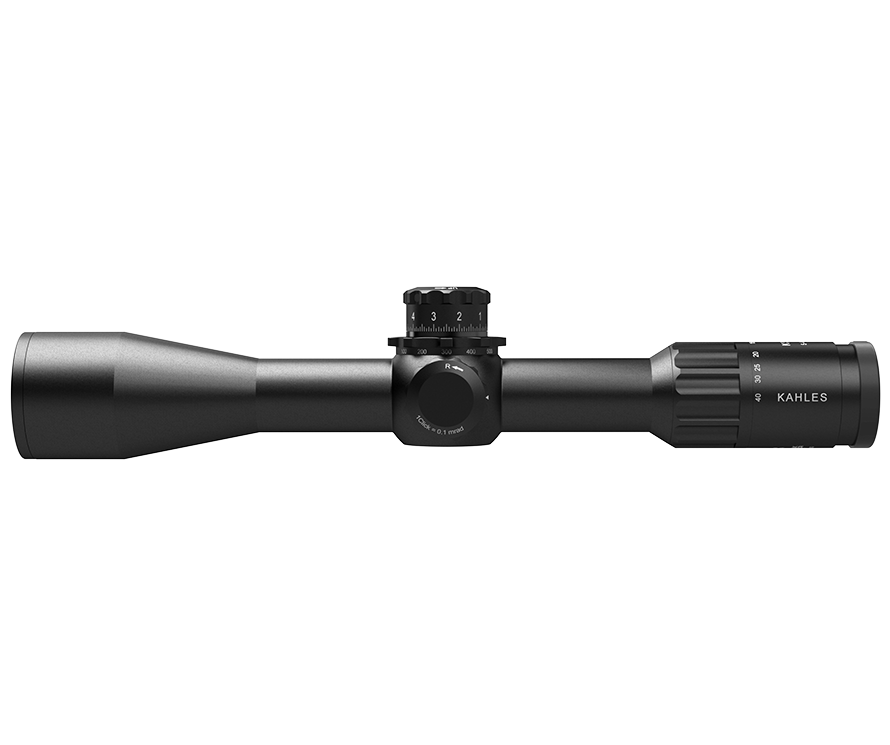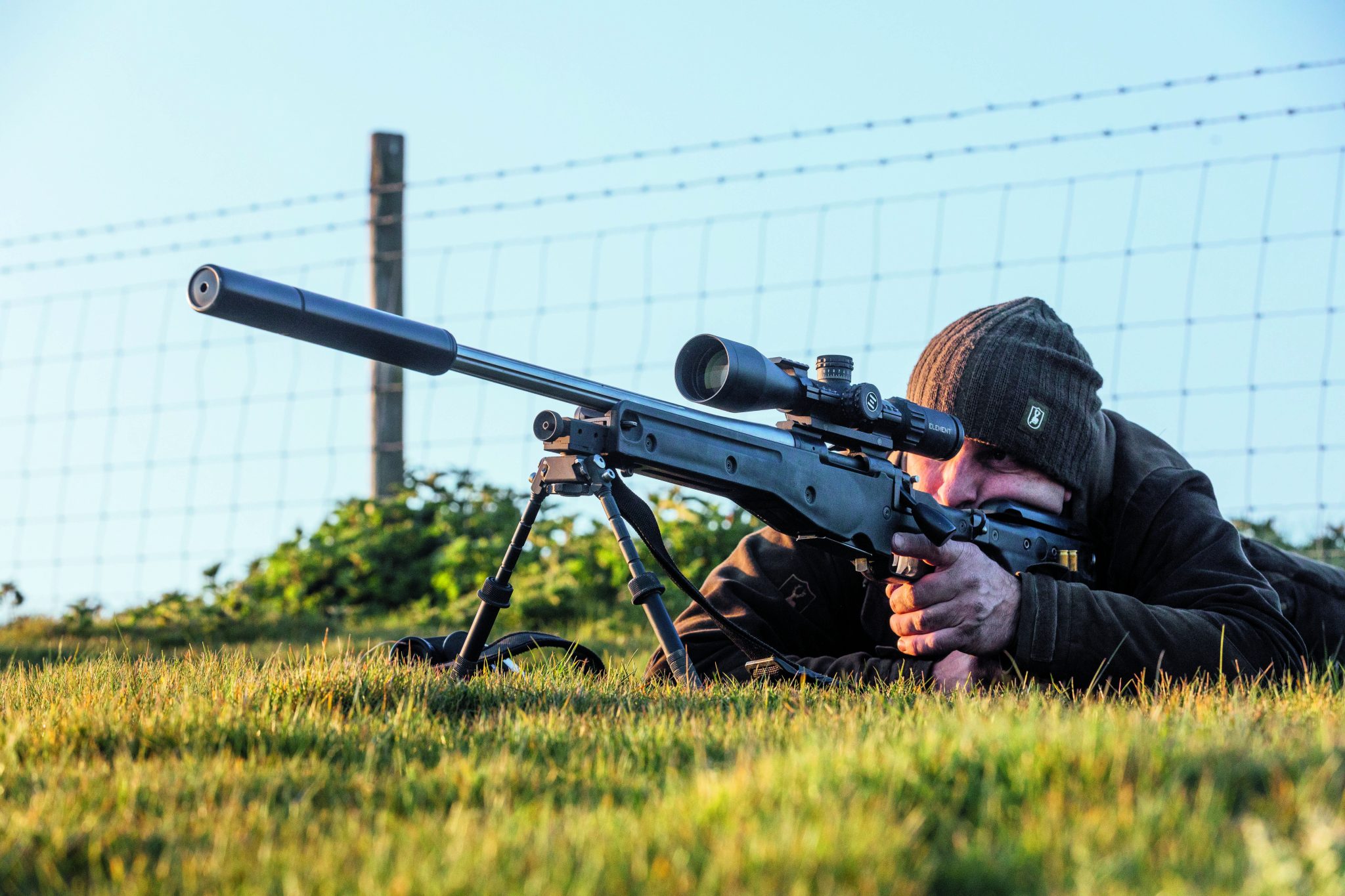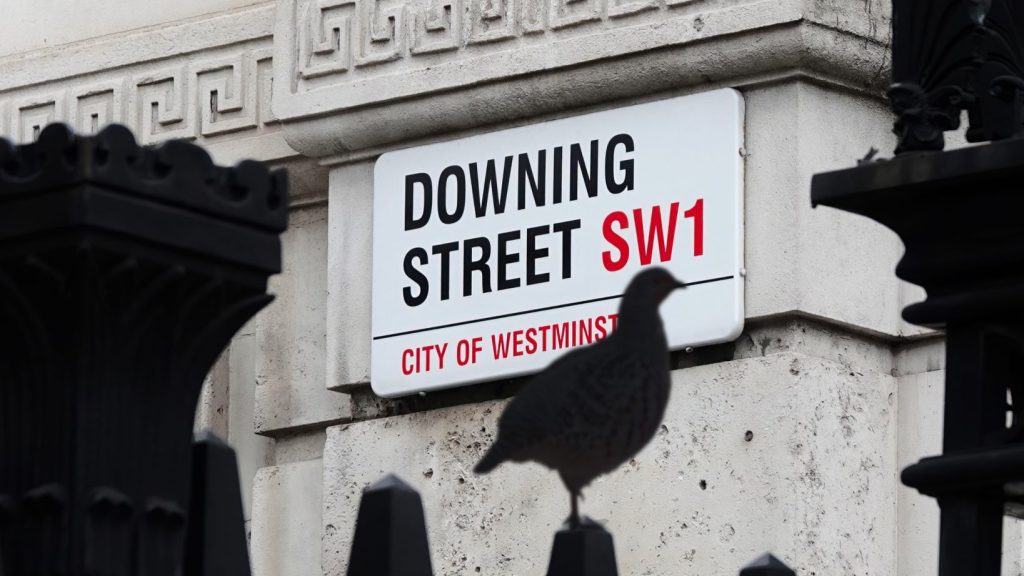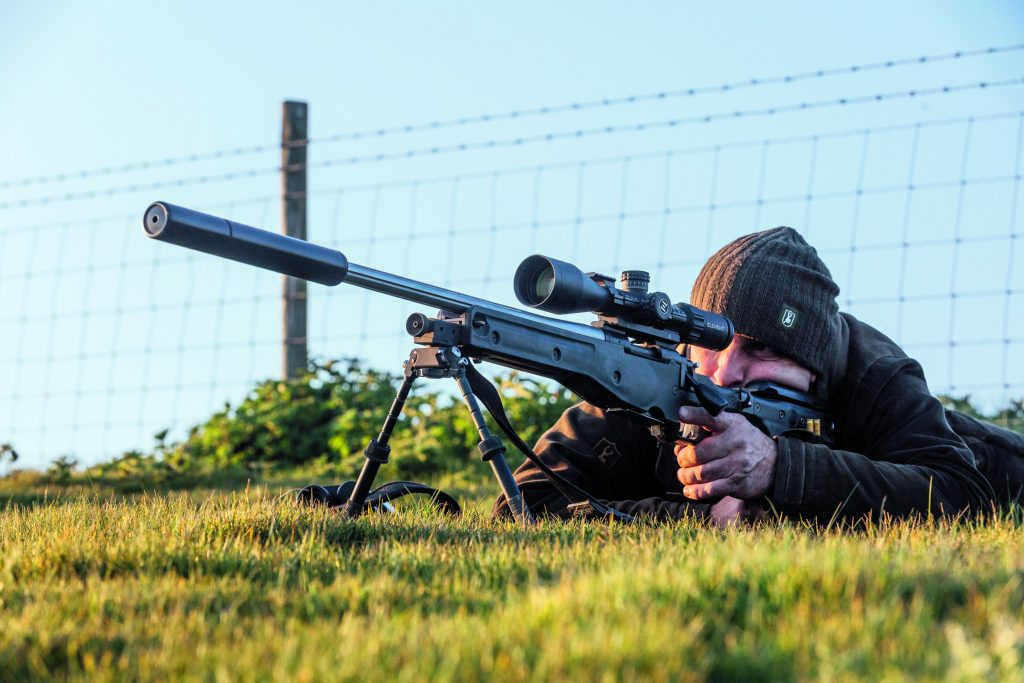News
Dangerous cows: why you should know your livestock
Would you like to speak to our readers? We offer sponsored articles and advertising to put you in front of our audience. Find out more.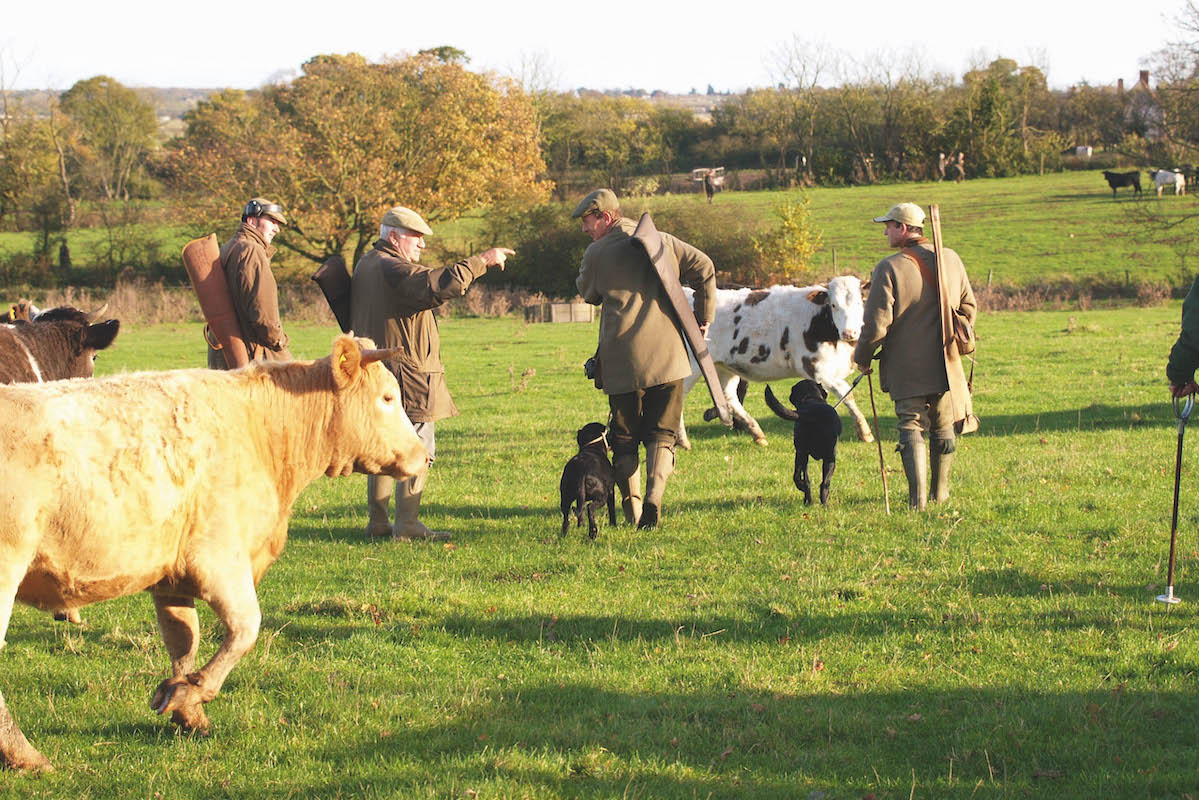 Cattle are invariably curious when they see dogs
Cattle are invariably curious when they see dogs
Virtually all of our lowland shooting takes place on farmland, so if you are spending time on the land, it pays to understand not only the farming cycle, but the crops in which you might be working your dog, or the livestock in the fields around you. Being able to recognise arable crops is one thing, but rather more important is being able to do the same with the animals you might come across during a day’s shooting. There are rather more than nine million cattle in Britain, making your chances of encountering at least one cow during a day’s shooting quite high. Dangerous cows can be a real threat. (Read how to stop dogs chasing sheep and livestock.)
Dangerous cows
Both breed and age make a great difference as to whether you are safe working your dog close to cows, or whether you should keep your dog on its lead and well away from them. You don’t have to be able to tell a Sussex from a red poll, or even a Charolais from a Limousin, but it’s vital to be able to tell a beef bull from its dairy equivalent. Generally speaking, the former are docile, the latter dangerous. You don’t often see dairy bulls in fields, but if you do, stay well clear. I once watched a Guernsey bull chase a hiker. It was astonishingly quick and the hiker only just made it to the safety of the fence.
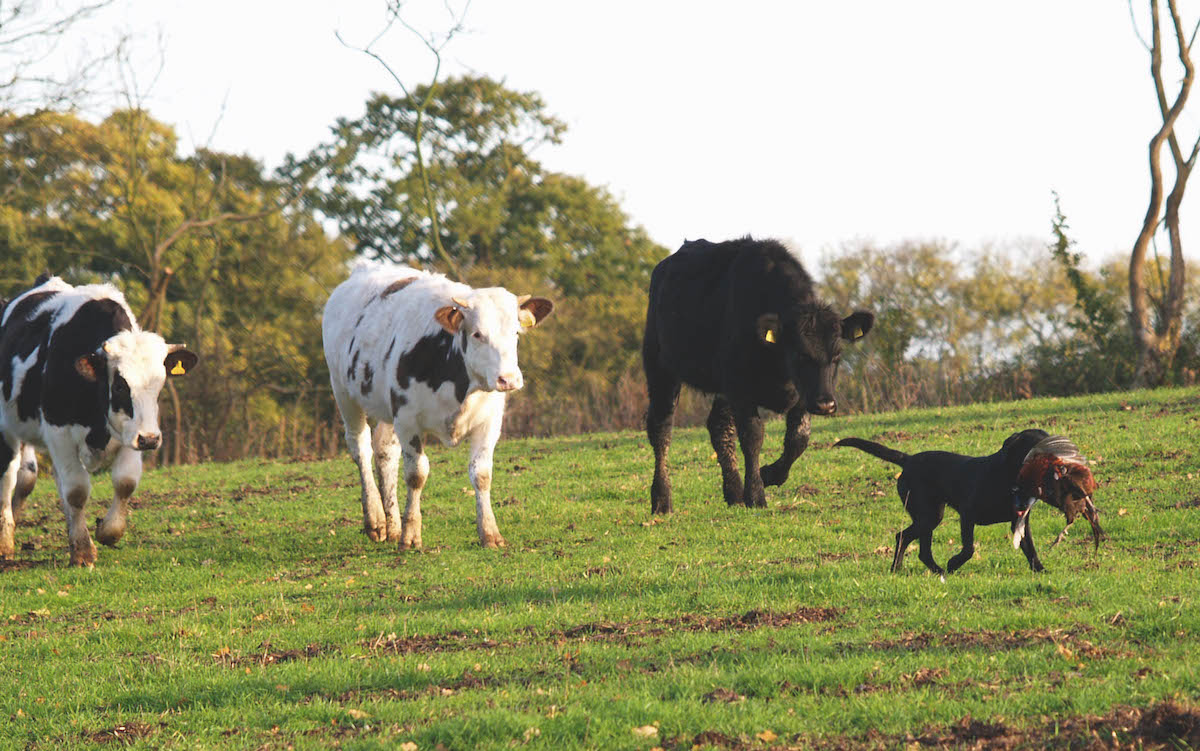
Dogs are likely to provoke the interest of cattle
Avoid cows with calves
Hereford or Angus bulls are generally remarkably placid, as are Highland cows, despite their impressive horns. It’s a general rule that any breed with a young calf should be avoided, but the real danger comes from herds of inquisitive young bullocks or heifers that will chase and even trample dogs (and sometimes their handlers). If you are being chased, let your dog off its lead, as dogs can generally outrun cows and the cows are probably not interested in you. I’ve never had a problem with mature dairy cattle as they are generally used to people, but always treat them with caution.
Unlike dangerous cows and cattle, sheep never pose a threat to dogs, but the dogs do to the sheep. Most gundogs will ignore sheep, but don’t forget that sheep are easily worried, so be extra careful when working your dog anywhere near them. I’ve found that sheep are often far more wary of liver-and-white or black-and-white spaniels than they are of labradors, probably because the spaniels look more like collies. (Read more on sheep worrying.)
Horses and pigs
Loose horses in a field pose a serious risk to working dogs. A friend had a pony that could be safely ridden by young children, but the same pony would chase any dog that came into its field and had a similar dislike of badgers, of which it killed several. I would never work a dog in a field with horses unless I knew the horses individually and was confident that they were dog friendly. Most horses are, but one kick can easily kill a dog.
Pigs are another matter. I live in an area with a high population of outdoor pigs and have often worked my dogs close to piggeries. A hungry porker will quickly snaffle up a fallen bird, but I don’t think that pigs pose a serious risk to a working gundog.
The real problem with outdoor pigs is that they are invariably surrounded by electric-wire fences that you don’t want your dog to touch, as few things will put them off more than a 3,000-volt shock. It’s for this reason that I’ve never worked my dogs within a pig field. (Read more on dogs and electric fences.)
Related articles
News
Anti-grouse shooting petition crushed by MPs who don't even shoot
Wild Justice's petition to ban driven grouse shooting was quashed in Westminster Hall yesterday, with all but one MP opposing the ban
By Time Well Spent
News
A sound decision as moderators to be taken off licences
The Government has finally confirmed what the shooting community has long argued – that sound moderators should be removed from firearms licensing controls
By Time Well Spent
Manage Consent
To provide the best experiences, we use technologies like cookies to store and/or access device information. Consenting to these technologies will allow us to process data such as browsing behavior or unique IDs on this site. Not consenting or withdrawing consent, may adversely affect certain features and functions.
Functional Always active
The technical storage or access is strictly necessary for the legitimate purpose of enabling the use of a specific service explicitly requested by the subscriber or user, or for the sole purpose of carrying out the transmission of a communication over an electronic communications network.
Preferences
The technical storage or access is necessary for the legitimate purpose of storing preferences that are not requested by the subscriber or user.
Statistics
The technical storage or access that is used exclusively for statistical purposes.
The technical storage or access that is used exclusively for anonymous statistical purposes. Without a subpoena, voluntary compliance on the part of your Internet Service Provider, or additional records from a third party, information stored or retrieved for this purpose alone cannot usually be used to identify you.
Marketing
The technical storage or access is required to create user profiles to send advertising, or to track the user on a website or across several websites for similar marketing purposes.

